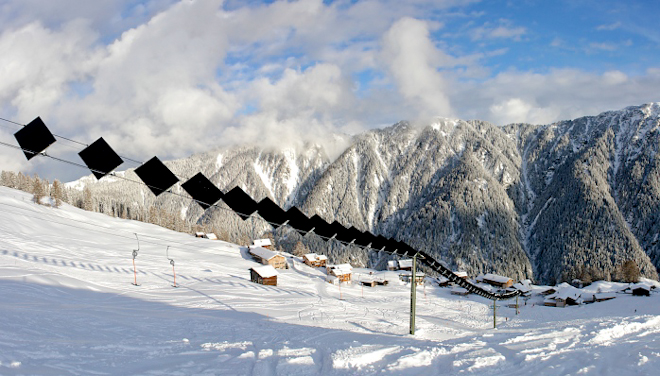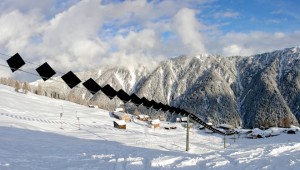
06 Dec Earth Matters: Hawai’i Leads by Example
 ‘A’ohe hana nui ke alu ‘ia. Translation? “No task is too big when done together by all.”
‘A’ohe hana nui ke alu ‘ia. Translation? “No task is too big when done together by all.”
This Hawaiian ‘olelo no’eau or proverb, was recently illuminated when the power of the Kaua’i and Big Island communities overcame political gridlock and “outside money” in order to ensure the protection of their health and environment from impacts caused by experiments with GMOs and use of pesticides.
Similarly, over time, local-level and state-level initiatives such as the Hawaii 2050 Sustainability Plan will help to reduce the risks associated with Hawaii’s current dependence on imported services and products, build resilience to address unavoidable impacts caused by climate change, preserve the aloha spirit, and create new economic opportunities in Hawaii for present and future generations.
Since the late 1980s, sustainability has been globally accepted and sustainable development defined as “…. development that meets the needs of the present without compromising the ability of future generations to meet their own needs.” This definition of sustainability can traced to the Brundtland Commission’s concept of sustainable development, which they presented to the United Nations.
In line with the Brundtland definition and building upon the Hawaii State Plan conceived in the mid-1970s, the 2050 Hawaii Sustainability Plan proclaims sustainability to encompass the following criteria:
• Respects the culture, character, beauty, and history of our state’s island communities.
• Strikes a balance between economic, social and community, and environmental priorities.
• Meets the needs of the present without compromising the ability of future generations to meet their own needs.”
In order to meet the defined criteria for sustainability in Hawaii, the 2050 Hawaii Sustainability Plan has designated the following five overlying goals:
• Living sustainably is part of our daily practice in Hawaii.
• Our diversified and globally competitive economy enables us to meaningfully live, work and play in Hawaii.
• Our natural resources are responsibly and respectfully used, replenished and preserved for future generations.
• Our community is strong, healthy, vibrant and nurturing, providing safety nets for those in need.
• Our Kanaka Maoli and island cultures and values are thriving and perpetuated.
Some of the elements necessary to facilitate the five primary goals of the 2050 Hawaii Sustainability Plan include: generating public and private sector awareness, engagement, and stewardship, supporting the growth of local agriculture, developing renewable energy sources and efficient waste management systems, promoting economic development in local context, and creating a comprehensive education program. Among these elements, education plays the most significant role because it serves as the foundation for the success of the other elements and the subsequent implementation of a comprehensive sustainability plan.
The key to generating public and private sector awareness, engagement, and stewardship encompasses two interrelated pathways that concentrate on the diffusion of knowledge. The first pathway entails conducting educational outreach events that present a problem to be solvable. If a community perceives a problem to be solvable then it is more likely to engage and embrace stewardship. The second pathway involves incorporating sustainability into the academic curriculum at all levels as a means to stimulate a shift in the behavior of future generations.
Likewise, education in conjunction with policy and financial support stimulates the growth of local agriculture and manufacturing, which in turn helps to reduce the risk of depending on imported products. In addition, the development of local agricultural production and other economic opportunities, which capitalize on a community’s capacity, serves to foster a diversified and competitive economy that can support the preservation of the island’s culture, values, and lifestyle.
Furthermore, the continued development of renewable energy sources helps to reduce Hawaii’s dependence on imported fossil fuels. According to the State of Hawaii Department of Energy, “Hawaii is the most oil-dependent state in the Unites States with more than 95 percent of its energy needs coming from imported fossil fuels.”
As a result, the 2008 Hawaii Clean Energy Initiative developed a framework for “achieving 70 percent clean energy by 2030, an undertaking that will require a transformation in how its energy is produced and consumed.” Moving forward to achieve the goals outlined by the clean energy initiative, the Hawaii Public Utilities Commission has recently approved the development of a $41 million solar farm on Kaua’i, which will provide six percent of the island’s energy needs each day.
Hopefully, San Miguel County and the Telluride Ski Resort will follow the example set by Hawai’i. Imagine the environmental and social benefits along with the economic marketability if GMOs and fracking were banned, and the ski resort chairlifts were powered by renewable energy sources instead of coal-burning power plants.



Sorry, the comment form is closed at this time.